




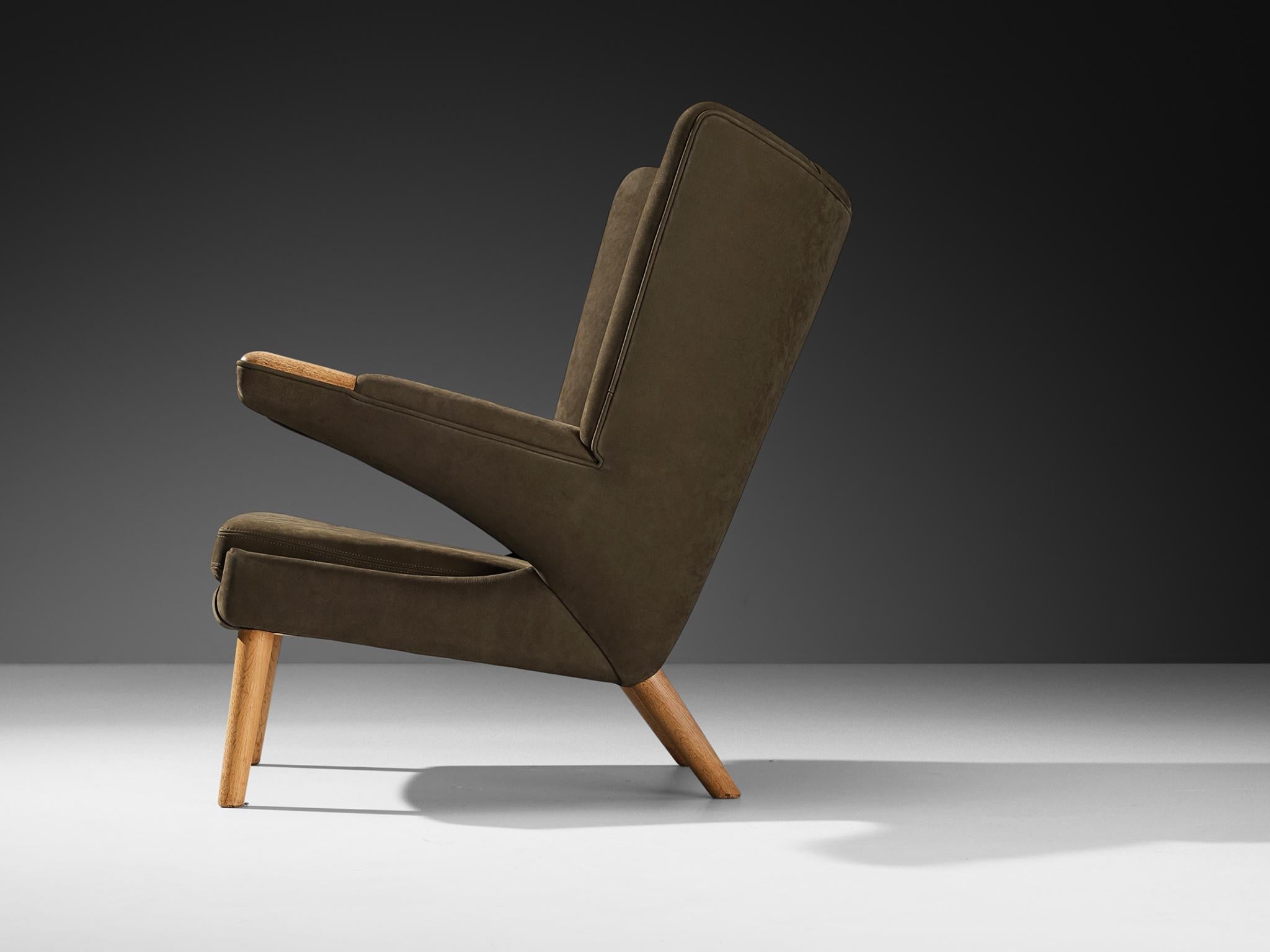
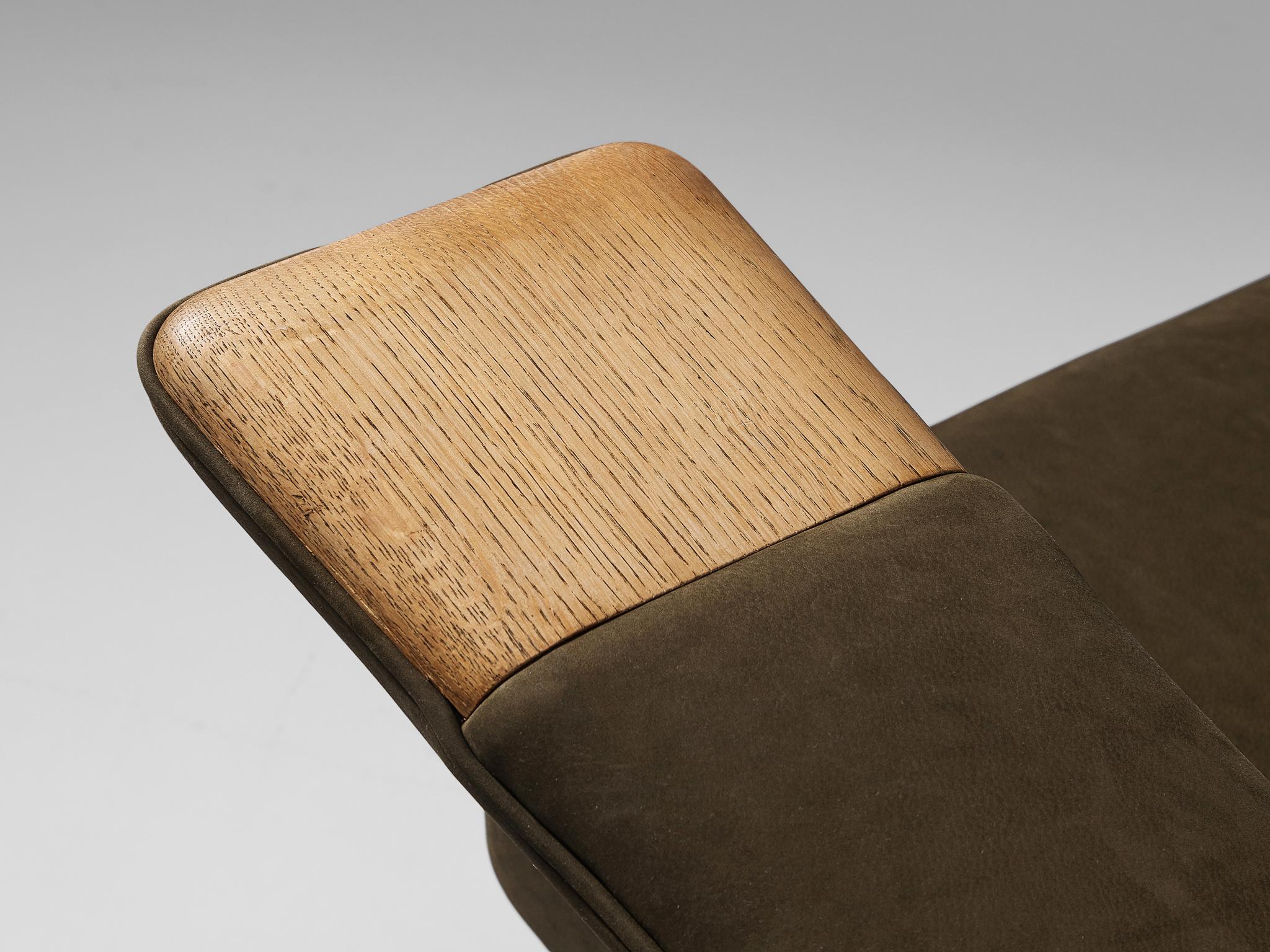
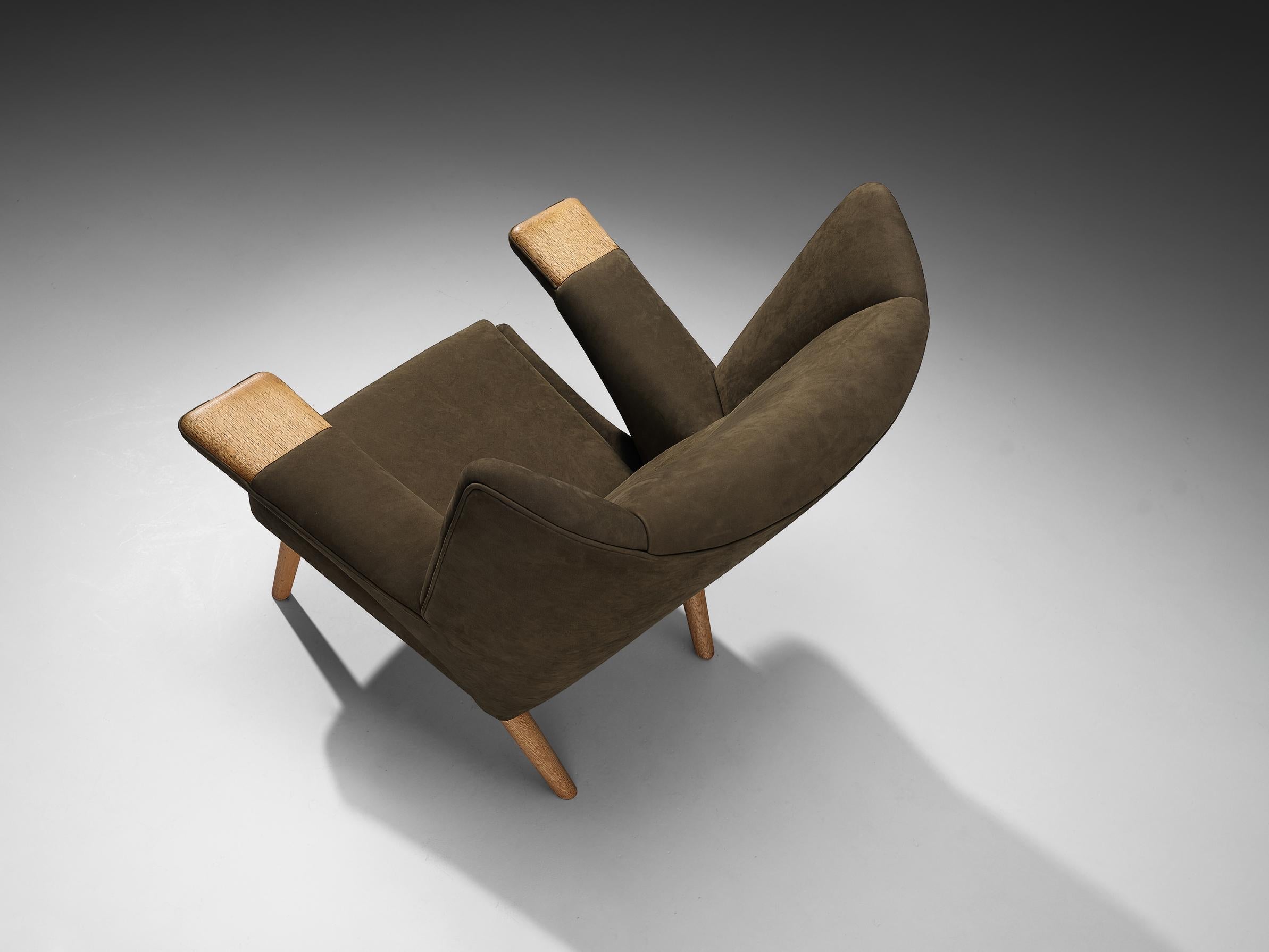
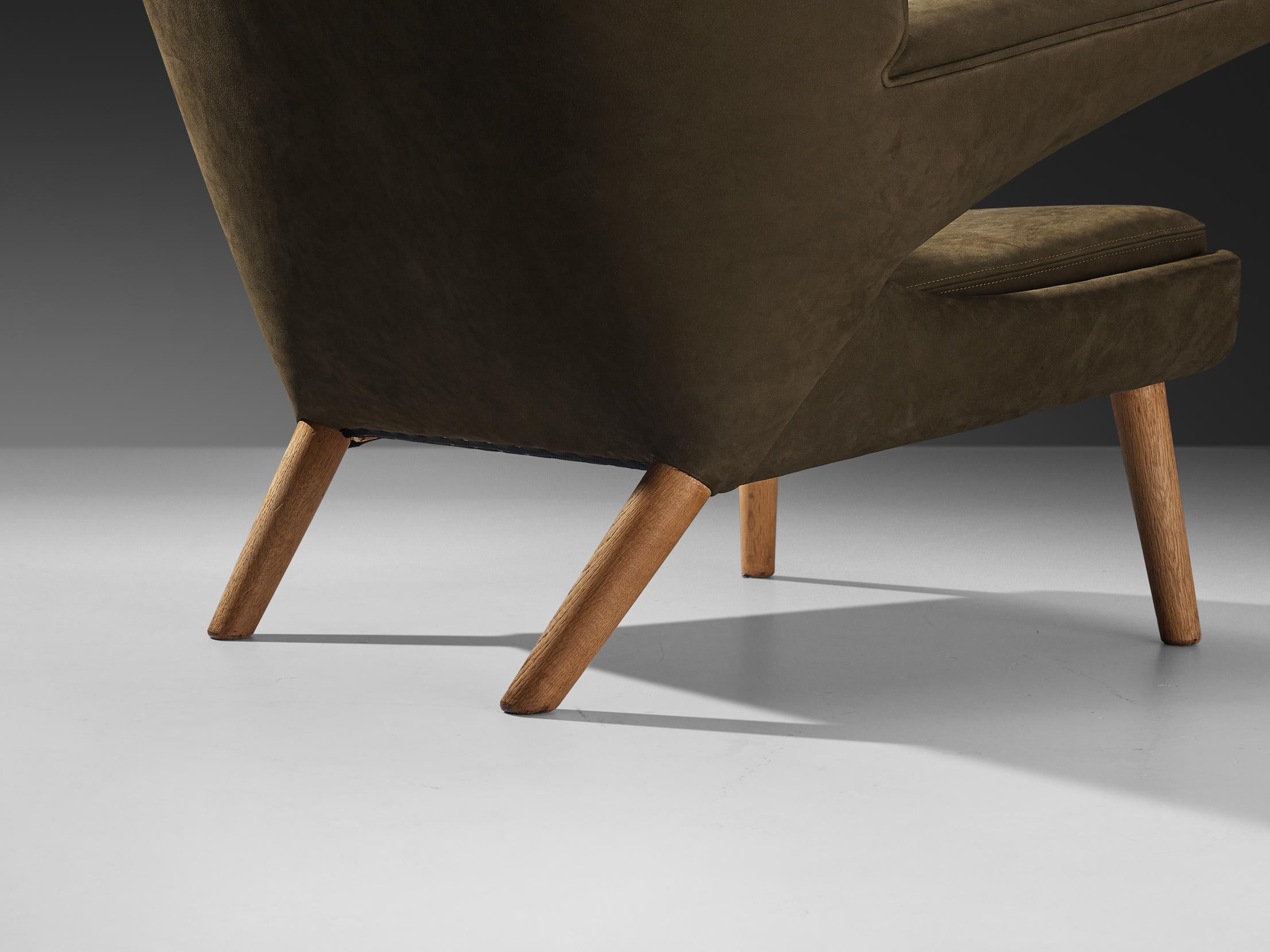
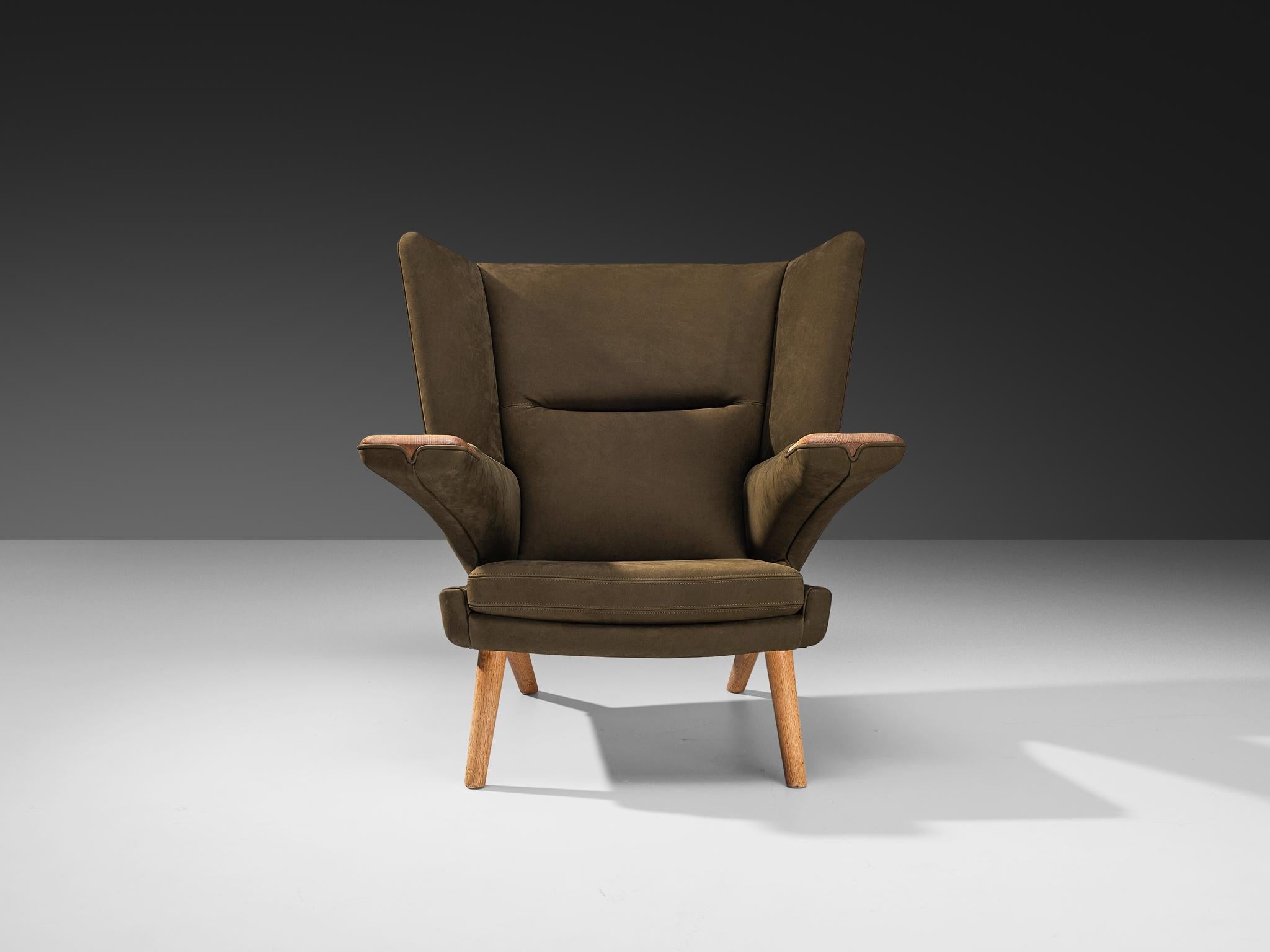

Hans J. Wegner for A.P. Stolen ‘New Papa Bear’ Easy Chair in Nubuck Leather
Hans J. Wegner for A.P. Stolen, ‘New Papa Bear’ lounge chair, model AP69, oak, reupholstered in Ohmann Colorado nubuck leather, Denmark, 1968/69
This Danish armchair named ‘New Papa Bear’, model AP69, is a design by Hans J. Wegner for AP Stolen produced in 1968/69. This chair is rare and of limited availability. The design is larger and more robust in comparison to the original 'Papa Bear' model 'AP19' from 1951. For instance, the backrest develops at an angle of 90 degrees into wider armrests. While remaining relatively faithful to the original design, this chair also exhibits traits commonly associated with the Papa Bear chair. Like the armrests that have been cut loose from the seat, providing the sitter with the ability to move freely. Another interesting detail are the wooden 'claws' at the end of the armrests, to hide the joinery in the fabric and prevent the sitter from soiling the upholstery with its hands. The chair is reupholstered in nubuck leather in a dark olive-green shade. It was in fact a journalist who dubbed this AP19 the “Papa Bear”, for obvious reasons: it looks like a bear hugging the sitting from behind. Anker Pedersen, the owner and founder of A.P. Stolen, was so fond of the name that it has been referred to as the "Papa Bear chair" ever since. The new model was highly sought-after in the United States during the 1970s. The lounge chair aligns with the American lifestyle of that period, its substantial shape and generous properties reminiscent of the American cars of that era.
Hans Wegner (1914-2007) is one of the most prolific furniture designers of the world. Wegner was born in 1914 in Denmark and began his apprenticeship with Danish master cabinetmaker H.F. Stahlberg when he was fourteen years old. Afterwards, he moved to Copenhagen and attended the School of Arts and Crafts between 1936 and 1938. In 1938, he was approached by the architects and designers Arne Jacobsen and Erik Møller. It was also during this period that he started to collaborate with cabinetmaker Johannes Hansen. In 1943, he established his own studio, and he became one of the most renowned and creative Danish furniture designers. Wegner's furniture was designed with the greatest understanding of materials, construction techniques, and use. Wegner is known to have thorough understanding of the materials he worked with, yet his greatest aim was to create expressive and exciting design. Although Wegner was a functionalist, he was not a rational dogmatist such as Kaare Klint, of whom he was a student. Instead, his designs sparkle with inventiveness and sculptural sense. But this never meant that his organic and sensuous forms left the strict rules of functionalism. At heart, Wegner was an idealist. He was relentless in his quest for the best chair: 'there is never one damn thing that cannot be made better'. However, Wegner was aware that he could not create the 'perfect' chair, which gave him the freedom to produce as much as possible. He left behind more than 3500 drawings and about 500 of his designs went into production. His designs feature in the UN Building and Seagram Building in New York, UNESCO's headquarters. NATO's headquarters in Paris, and several buildings by the architects Skidmore, Owings & Merrill.
VAT within the EU: When buying or delivering an item within the EU, VAT usually applies and will be added.
Choose options











Product Details